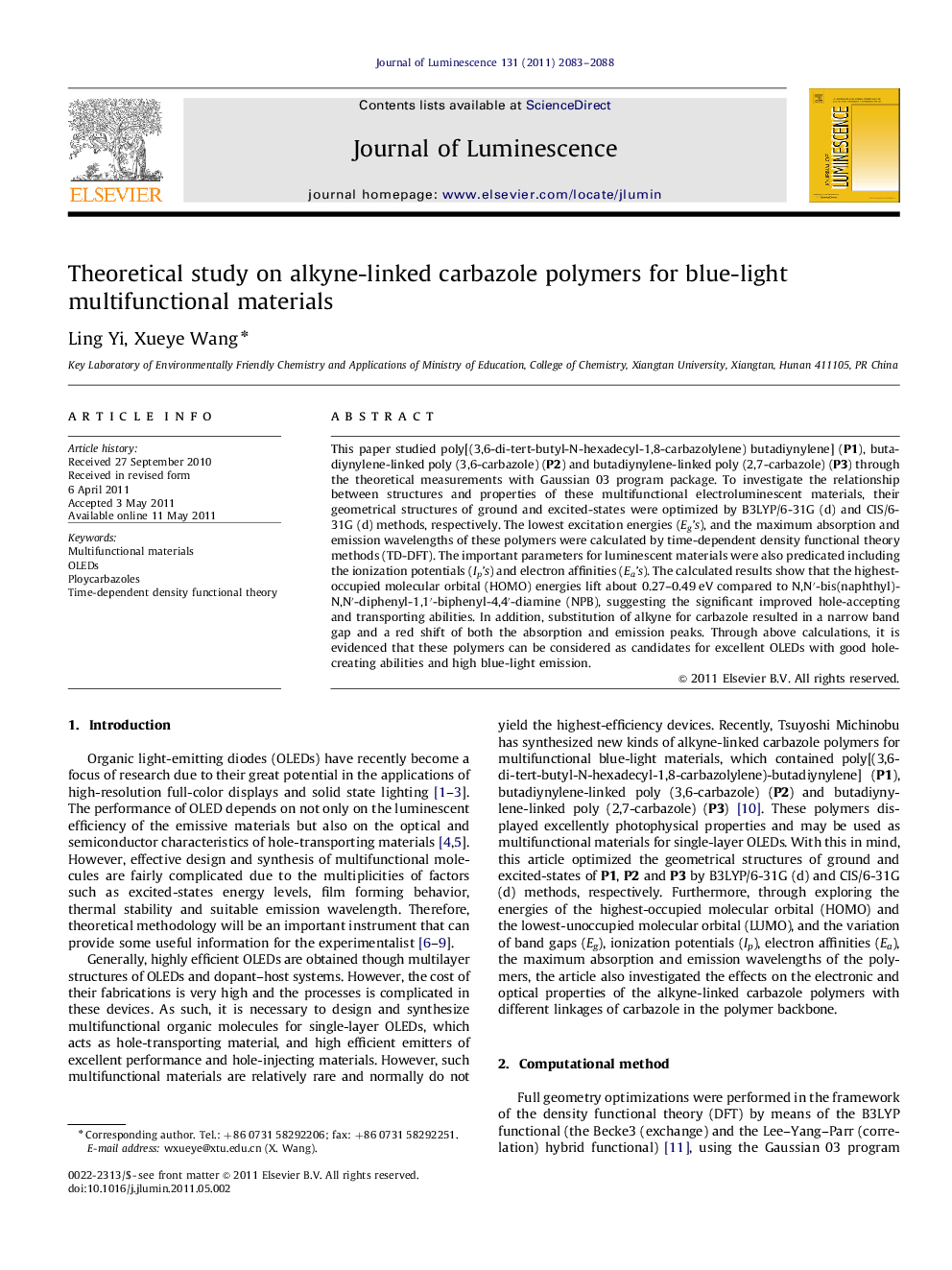| Article ID | Journal | Published Year | Pages | File Type |
|---|---|---|---|---|
| 5401869 | Journal of Luminescence | 2011 | 6 Pages |
This paper studied poly[(3,6-di-tert-butyl-N-hexadecyl-1,8-carbazolylene) butadiynylene] (P1), butadiynylene-linked poly (3,6-carbazole) (P2) and butadiynylene-linked poly (2,7-carbazole) (P3) through the theoretical measurements with Gaussian 03 program package. To investigate the relationship between structures and properties of these multifunctional electroluminescent materials, their geometrical structures of ground and excited-states were optimized by B3LYP/6-31G (d) and CIS/6-31G (d) methods, respectively. The lowest excitation energies (Eg's), and the maximum absorption and emission wavelengths of these polymers were calculated by time-dependent density functional theory methods (TD-DFT). The important parameters for luminescent materials were also predicated including the ionization potentials (Ip's) and electron affinities (Ea's). The calculated results show that the highest-occupied molecular orbital (HOMO) energies lift about 0.27-0.49Â eV compared to N,Nâ²-bis(naphthyl)-N,Nâ²-diphenyl-1,1â²-biphenyl-4,4â²-diamine (NPB), suggesting the significant improved hole-accepting and transporting abilities. In addition, substitution of alkyne for carbazole resulted in a narrow band gap and a red shift of both the absorption and emission peaks. Through above calculations, it is evidenced that these polymers can be considered as candidates for excellent OLEDs with good hole-creating abilities and high blue-light emission.
⺠We studied poly [(3,6-di-tert-butyl-N-hexadecyl-1,8-carbazolylene) butadiynylene] by theoretical method. ⺠The geometrical structures of ground and excited-states had been optimized by B3LYP/6-31G (d) and CIS/6-31G (d). ⺠The relationship between structures and properties of these multifunctional electroluminescent materials had been investigated. ⺠These molecules are excellent candidates for multifunctional OLED materials. ⺠The substitution of alkyne for carbazole results in a narrow band gap and a red shift of both the absorption and emission peaks.
